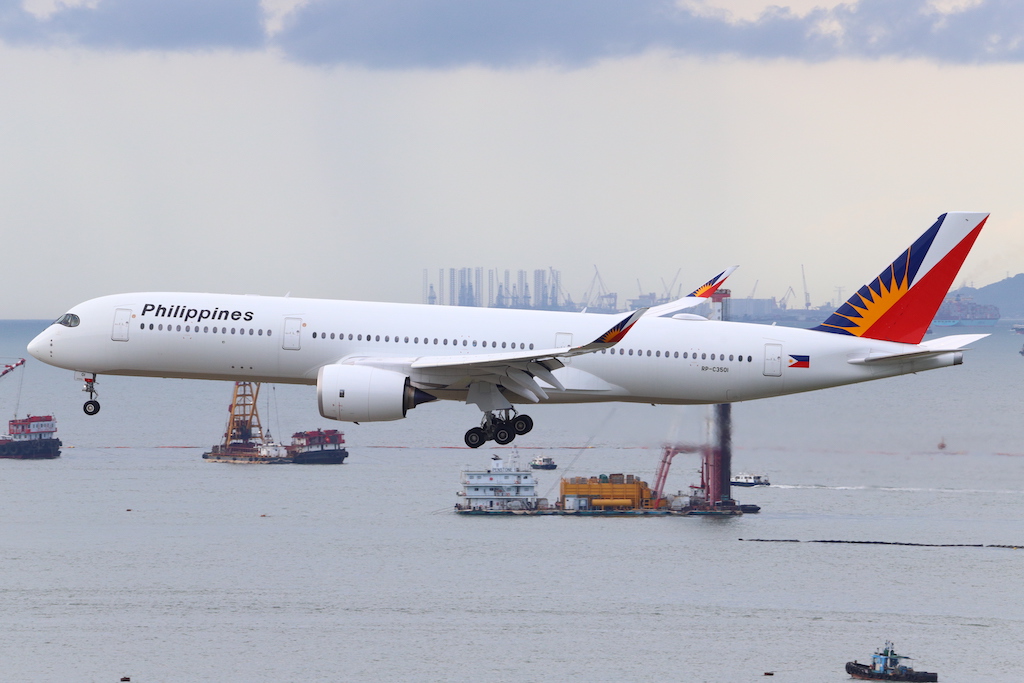Philippine Airlines Aims for Pre-Packaged 6-Month Bankruptcy Restructuring

Photo Credit: Philippine Airlines plans to return half of its A350 fleet to lessors under its Chapter 11 restructuring plan. Flickr / EddieWongF14/Kwok Ho Eddie Wong
Philippine Airlines' (PAL) Chapter 11 bankruptcy filing in the U.S. reads as a tale as old as as airlines. Faced with a precipitous drop in business from the Covid-19 pandemic, the carrier bled through its cash reserves leaving it with no other option than to restructure through the courts to avoid liquidating.
Manila-based PAL had just $28.6 million in unrestricted cash on hand when it filed for Chapter 11 on September 3, court documents show. That is paltry for an airline its size with 95 aircraft at the end of June, and a workforce of more than 3,000 after already cutting its staff by 32 percent. In a filing, adviser Seabury called the level "dangerously low," and said PAL should have "not less" than $300 million in unrestricted cash at any given time.
PAL's bankruptcy comes as a surprise to few. The airline has undergone several out-of-court reorganizations that managed to improved revenues but not necessarily profitability. Prior to the pandemic in early 2020, executives told staff that the carrier needed to "find a way to profitability, reduce its debt, and achieve a higher level of competitiveness," in order to "survive."
Those comments came after almost a decade of budget competition eating its lunch. The domestic share of PAL, and its subsidiary PAL Express, shrank by 12.5 points to 29 percent from 2012 to 2019 — a period when overall domestic traffic grew nearly 44 percent to 29.5 million flyers — according to data from the Philippines' Civil Aeronautics Board. Over the same period, market leader Cebu Pacific's share shrank two points to 44 percent while Philippines AirAsia's share grew by eight points to 18 percent.
Despite the failed attempts to reinvent itself, PAL does come impressively prepared to Chapter 11. The carrier has agreements in place with nearly all of its creditors and an already agreed upon plan for its exit. This will allow for, in the words of PAL Chief Financial Officer Nilo Thaddeus Rodriguez, a "swift and efficient reorganization" that could wrap within 180 days court documents show.
Such a timeline would be speedy for an airline PAL's size. For comparison, larger Aeromexico, Avianca and Latam Airlines Group all continue to operate under Chapter 11 protection more than a year after their own respective filings. Only Avianca has a path to exiting bankruptcy at this time after filing a reorganization plan with the court in August.
PAL's own plan calls for returning 21 excess aircraft — a fleet reduction of nearly a quarter — and cutting $2.1 billion in aircraft-related and other obligations from its balance sheet. In addition, it has lined up $505 million in debtor-in-possession financing from shareholder Buona Sorte Holdings. And the airline has term sheets for another $150 million in exit financing.
On the fleet front, PAL is seeking to reject 19 leased aircraft. This includes two Airbus A320s, three Airbus A321s, six Airbus A330-300s, three Airbus A350-900s — half of its A350 fleet — two Boeing 777-300ERs and one de Havilland Dash 8-400. The airline and lessors have agreed to transition the balance of its leased fleet — 66 aircraft — to power-by-the-hour agreements to further reduce expenses.
"We move forward with renewed confidence, as today’s actions enable us to continue serving our customers and the Philippine economy long into the future," said PAL President and Chief Operating Officer Gilbert F. Santa Maria in a statement.
PAL's first bankruptcy court hearing is scheduled for September 9.
